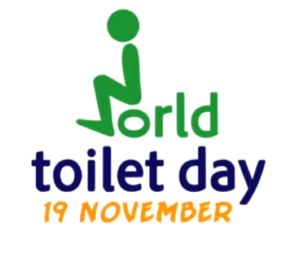Today, 2.4 billion people are struggling to stay well, keep their children alive and work their way to a better future – all for the want of a toilet.
“Sustainable development goal 6 calls on the international community to ensure access to toilets by 2030. Delivering on this basic human right — the right to water and sanitation — is good for people, business and the economy.” — UN Secretary-General, Ban Ki-moon
Top facts:
- 2.4 billion People live without improved sanitation (World Health Organization (WHO)/UNICEF 2015).
- One in ten people has no choice but to defecate in the open (WHO/UNICEF 2015).
- Diarrhoea caused by poor sanitation and unsafe water kills 315,000 children every year (WAS-Hwatch 2016).
- Disease transmission at work mostly caused by poor sanitation and hygiene practices, causes 17% of all workplace deaths (International Labour Organization (ILO) 2003).
- Loss of productivity due to illnesses caused by lack of sanitation and poor hygiene practices is estimated to cost many countries up to 5% of GDP (Hutton 2012)
- In Nepal, every year 600 children under five die from diarrhoeal diseases caused by dirty water and poor sanitation. This accounts for a third of all child deaths overall.
- Only 48% of the population in Nepal has access to a proper toilet, helping to cause widespread disease. The majority of people do not have a latrine and have no option but to defecate in the open.
(WaterAid) - At the end of 2015, out of 75 districts, 27 claim ODF status. (Ministry of Water Supply and Sanitation)




